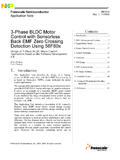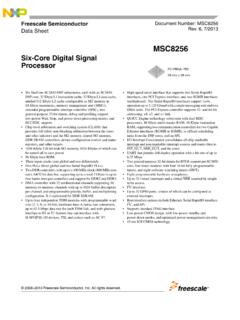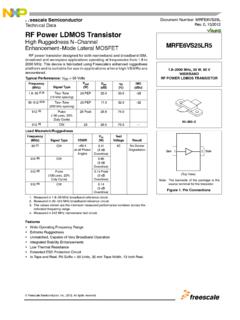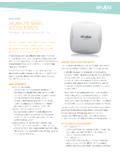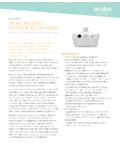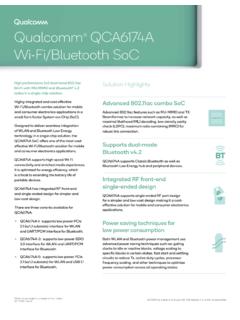Transcription of AN2253, Channel Estimation for a WCDMA Rake …
1 Freescale SemiconductorApplication NoteAN2253 Rev. 2, 11/2004 Freescale Semiconductor, Inc., 2004. All rights third-generation universal mobile telecommunications system (UMTS) uses direct-sequence code division multiple access (DS-CDMA) to transmit data. DS-CDMA is well suited to transmit data over the multipath fading Channel . The high signal bandwidth for the WCDMA system (5 MHz) allows the received signal to be split into distinct multipaths with high resolution. For the first generation of UMTS handsets, a rake receiver is the receiver of choice because it allocates one rake finger to each multipath, thus maximizing the amount of received signal energy.
2 The rake receiver combines these different paths into a composite signal with substantially better characteristics for demodulation than a single path. To combine the different paths meaningfully, the rake receiver needs such Channel parameters as the number of paths, their location (in the delay domain), and their (complex-valued) attenuation. In a WCDMA system, the necessary Channel parameters must be estimated and tracked throughout the transmission. This application note discusses the different methods for Channel Estimation and then describes an implementation of Channel Estimation on the StarCore SC140/SC1400 cores.
3 It examines the steps in the Channel Estimation algorithm and presents the Channel Estimation routine. The maximum load for this implementation is MIPS. The size of the filter is the designer s choice and can be fixed or changed adaptively for best performance based on an estimate of the doppler spread. The simulation results and the DSP implementation match almost exactly. Accuracy is greatly improved because 40-bit adds can be used instead of the 16-bit multiples. The algorithm performs well, as indicated by the plots presented in the results section of this Estimation .
4 22 Downlink Channel Estimation in WCDMA .. 43 Implementation on the SC140 Core .. 54 Results .. 105 References ..13 Channel Estimation for a WCDMA Rake ReceiverBy Ahsan AzizChannel Estimation for a WCDMA rake receiver , Rev. 22 Freescale SemiconductorChannel Estimation1 Channel EstimationTypically Channel Estimation is performed using one of three methods or a combination of these methods. The trade-offs between complexity and performance dictate the choice of algorithm: Data Aided Channel Estimation : Known pilot symbols are transmitted. At the receiver end, the Channel Estimation algorithm operates on the received signal along with its stored symbols to generate an estimate of the transmission Channel .
5 Decision-Directed Channel Estimation : A rough estimate of the Channel is obtained using a suitable Estimation method. Then this estimate is used to make symbol decisions. The Channel estimate is further improved using the resulting symbols as pilot symbols. This type of Estimation contains some inherent delay because the symbol decisions occur before the final Channel estimate can be made. Also, there may be error propagations because any errors in the symbol decisions affect the final estimate. Blind Channel Estimation : This Estimation process relies not on pilot symbols or symbol decisions but rather on certain characteristics of the modulated signal.
6 For example, the constant modulo algorithm (CMA) uses the amplitude of the signal as the criterion for estimating the Channel . In constant energy modulation schemes such as Quadrature Phase Shift Keying (QPSK), the knowledge that all signals are transmitted with equal energy is used as the basis for obtaining the Channel estimate. This type of algorithm typically requires a longer convergence time and usually has a higher mean square error (MSE) than the other two schemes. In a typical WCDMA rake receiver , Channel estimates are used to combine the multipaths.
7 Figure 1 shows how different paths are combined using Maximum Ratio Combining (MRC). In Figure 1, r(t) is the received signal, which is split into r(t- i). Note that, g(t, i) is the corresponding Channel estimate for each path is r(t- i). The objective is to estimate the Channel phase and amplitude (denoted in Figure 1 as g(t, i) ) for each of the identified paths. This information is then used for combining each path of the received 1. rake receiver for WCDMAPath SearchChannel EstimationIQDemapperXXXXXXXXr (t)Descramble/DespreadingMaximumRatioCom bining(MRC) 1 2 3 4r(t - t1)r(t - t2)r(t - t3)r(t - t4) td td td td g * (t, 1)g * (t, 2)g * (t, 2)g * (t, 4) Channel EstimationChannel Estimation for a WCDMA rake receiver , Rev.
8 2 Freescale Semiconductor3As Figure 1 shows, the following steps occur in a WCDMA receiver (excluding the error correction coding) Received signals are multiplied by the scrambling code and delayed versions of the scrambling code. A path searcher determines the delays prior to descrambling. Each delay corresponds to a separate multipath that is to be combined by the rake The descrambled data of each path is despread by simply multiplying the descrambled data by the spreading code. and dump. The despread data is integrated over one symbol period, giving one complex sample output per QPSK symbol.
9 This process is carried out for all paths to be combined by the rake receiver . combining. The same symbols obtained via different paths are then combined using the corre-sponding Channel information and a combining scheme such as MRC. combined output is sent to a simple decision device to decide on the transmitted objective of the Channel Estimation block is to estimate the Channel phase and amplitude (denoted in Figure 1 as g(t,ti) ) for each of the identified paths. Once this information is known, it can be used for combining each path of the received preceding operations are mathematically expressed in the equations that follow.
10 InEquation 1, u(t) is the transmitted signal. Here ak is the complex transmitted symbol, pk is the complex spreading (OVSF) and scrambling code combined, N is the spreading factor, f(t) is the pulse shaping filter (root raised cosine with roll-off factor ), and T is the chip duration. Equation 1 Equation 2 shows the received signal y(t) at the mobile unit. The mobile Channel is modeled as a filter with complex taps given by cj and delays of dj, where {j= } for J-1 different paths and g(t) is the Additive White Gaussian Noise (AWGN) with single-sided Power Spectral Density (PSD), N0 Equation 2At the receiver end the received data is first passed through a matched filter (matched to the transmitter filter).

